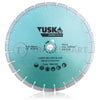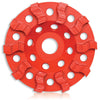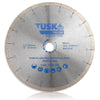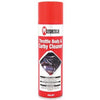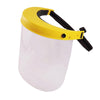Concrete delamination occurs when the paste layer of your concrete separates from the lower, hardening levels found in the slabs body. This usually occurs when your concrete slab is laid down on a day with rising temperatures. This is something that building supplies, concrete machinery and timing alone cannot prevent.
Today we’ll be going over the causes and prevention methods that you can use to decrease the risk of delamination on your work site.
What is Concrete Delamination?
Delamination usually affects the top inch of your slab. This can be because of improper finishing or a thin layer of water or air. You can tell that your concrete slab is delaminating by the colour differences and cracking that develops on the top of its surface when it dries faster in comparison to the lower levels of the slab.
What Causes Concrete to Delaminate?
While delamination usually occurs after floating and the first trowelling pass, they also have been known to develop during the floating step if its surface is overworked and packed too tightly. If this is done during a day with rapid drying conditions, such as low humidity, sun, or wind, it can increase the likelihood of delamination. The rapid drying of this top level makes it look like the slab is ready for trowelling when that really isn’t the case.
There are also a range of factors to consider when laying your concrete slab that can increase the likelihood of delamination. These can include:
- A cool formation level, which will cause the concrete to set slowly.
- The temperature of the concrete and its icing ingredients, which can change your concrete’s setting rate.
- The outside environment has created a rapidly drying scene that will turn your concrete into a crust like surface that appears ready to finish but isn’t.
- Excessive vibration from tools and other machinery.
- Using a dry shake prematurely on your concrete slab.
- A concrete slab that's too thick or has been placed directly on top of a vapour retarder.
How Can I Prevent Concrete Delamination?
Just in the same way there are a range of factors to consider that may increase the chance of delamination. There are also factors you should adapt to, in order to prevent this problem from occurring.
You should plan the right day to lay out your concrete slab. Working on a cooler day can prevent delamination from happening as it gives your slab the right environment to set and harden. Even if you’re working in satisfactory conditions, you should still try and delay final finishing. By delaying this process your finish will actually appear smoother. You should also be covering your slab with polyethylene or a similar product to prevent evaporation and increase the likelihood of a cleaner finish.
Other considerations to keep in mind to prevent delamination include:
- Promoting even setting throughout the slab by using accelerated or heated concrete.
- Never placing concrete on top of a vapour retard.
- If you’re placing down an interior slab that requires a trowel finish, don’t use air-entrained concrete.
If you want to learn more about how to minimise the risk of concrete delamination on your work site, click the link to browse the Tradesmart supported Guide to Minimising the Risk of Delamination in Concrete created by Concrete NZ.
Tradesmart offers efficient and reliable solutions and friendly support teams to help find effective solutions for your business. To find out more about our range of industrial and construction tool head to our website or contact us on 09 283 9658.
































